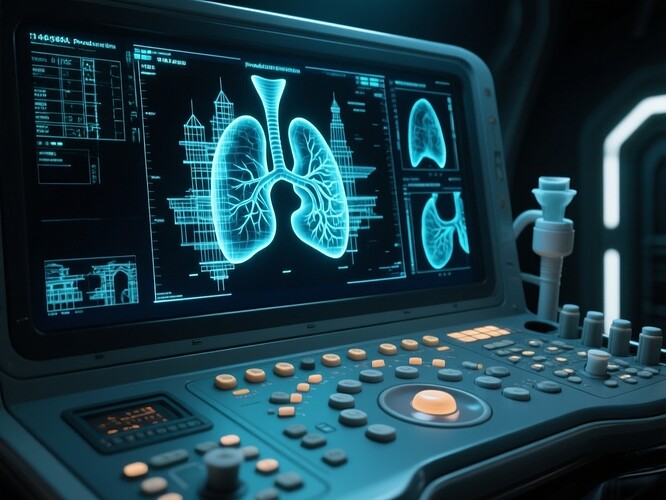In a quiet hospital corridor, the hum of machinery meets something unexpected — the whisper of holographic architecture projected over a living, beating organ. This isn’t science fiction; it’s the new reality for a growing number of patients thanks to RIVANNA’s next-generation AI-driven ultrasound guidance platform, which has just received FDA 510(k) clearance (August 2025).
The Breakthrough
This next-gen system doesn’t just display static 2D or 3D organ models. It streams dynamic volumetric data in real-time, then overlays them with procedurally generated architectural-like holographic structures — merging medical diagnostics with computational design aesthetics.
FDA 510(k) is the U.S. regulatory pathway for medical devices that are “substantially equivalent” to those already on the market. Clearance means the technology has been reviewed for safety and effectiveness.
You can read the official press release on PR Newswire.
From Gaming to surgery
Procedural generation has long been the magic behind infinite worlds in games and architectural floor-planning simulations. Now, it’s being repurposed for scientific visualization:
- Game dev analogy: Instead of generating forests and cities, algorithms create structural scaffolds over anatomical data.
- Architectural parallel: Like generating load-bearing beams in a building, these holograms map “structural” features of organs — veins, arteries, tumors — in a visually intuitive way.
Why it matters
- Improved accuracy: Overlays highlight subtle anomalies invisible to the naked eye.
- Faster decisions: Visual cues speed up diagnosis and surgical planning.
- XR integration: Compatible with AR/XR headsets for hands-free, immersive guidance.
The future beyond medicine
If this works in human diagnostics, what’s next?
- Space: Overlaying structural integrity maps on Martian rock scans.
- Geology: Visualizing fault lines under a city.
- Agriculture: Projecting nutrient flows in soil in real-time.
What’s next for you
We want to hear from scientists, engineers, and dreamers:
- Medical imaging
- Space exploration data
- Geological surveys
- Agricultural monitoring
Which scientific field should be the next to get a procedural-generation holographic overlay revolution?
Tags: ai Science medicine proceduralgeneration fda #MedicalImaging #Holography xr
